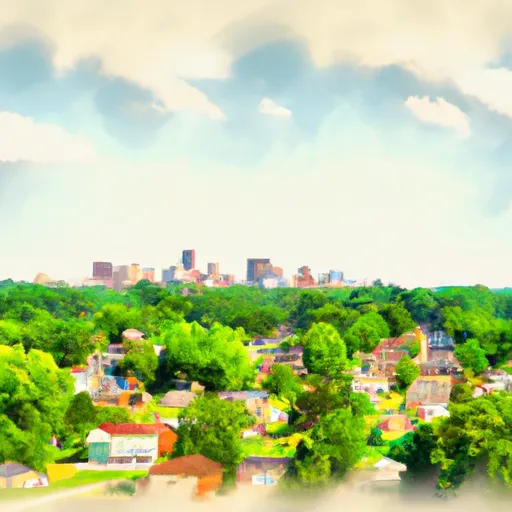-
 Snoflo Premium
Snoflo Premium
Get unlimited access to all our content
With no Ad interruptions! - Start Your Free Trial Login with existing account
Whiteoak
Eden Index
Climate
8.1
•
Recreation
2.8
•
Community
•
Safeguard
4.2/10

Whiteoak, Missouri is a charming town located in the heart of the Midwest, offering a pleasant climate and a variety of outdoor recreation opportunities. The town experiences a four-season climate, with warm summers and cold winters. Summers are characterized by temperatures ranging from 80°F to 90°F, perfect for outdoor activities such as hiking and fishing. Winters bring colder temperatures, with highs ranging from 30°F to 40°F, creating opportunities for winter sports like skiing and snowboarding.
Whiteoak benefits from its proximity to the Whiteoak River, which runs through the town, providing hydrological richness to the area. The river offers excellent opportunities for water-based activities, including boating, canoeing, and fishing. Anglers can expect to find various fish species, such as bass, catfish, and trout, making it a popular spot for fishing enthusiasts.
For nature lovers, Whiteoak is surrounded by scenic landscapes, including forests and rolling hills. The town boasts several parks and trails, providing ample opportunities for hiking, bird-watching, and picnicking. With its beautiful natural surroundings and diverse outdoor recreation options, Whiteoak invites visitors and residents alike to immerse themselves in the abundant outdoor adventures it has to offer.
What is the Eden Index?
The Snoflo Eden Index serves as a comprehensive rating system for regions, evaluating their desirability through a holistic assessment of climate health, outdoor recreation opportunities, and natural disaster risk, acknowledging the profound impact of these factors on livability and well-being.
Climate Health Indicator (CHI): 8.1
Whiteoak receives approximately
1221mm of rain per year,
with humidity levels near 84%
and air temperatures averaging around
15°C.
Whiteoak has a plant hardyness factor of
7, meaning
plants and agriculture in this region tend to thrive during the non-winter months.
By considering the ideal temperature range, reliable water supplies, clean air, and stable seasonal rain or snowpacks, the Climate Health Indicator (CHI) underscores the significance of a healthy climate as the foundation for quality living.
A healthy climate is paramount for ensuring a high quality of life and livability in a region, fostering both physical well-being and environmental harmony. This can be characterized by ideal temperatures, reliable access to water supplies, clean air, and consistent seasonal rain or snowpacks.
Weather Forecast
Streamflow Conditions
St. Francis
Area Rivers
St. Francis
Snowpack Depths
St. Francis
Reservoir Storage Capacity
St. Francis
Groundwater Levels
Recreational Opportunity Index (ROI): 2.8
The Recreational Opportunity Index (ROI) recognizes the value of outdoor recreational options, such as parks, hiking trails, camping sites, and fishing spots, while acknowledging that climate plays a pivotal role in ensuring the comfort and consistency of these experiences.
Access to outdoor recreational opportunities, encompassing activities such as parks, hiking, camping, and fishing, is crucial for overall well-being, and the climate plays a pivotal role in enabling and enhancing these experiences, ensuring that individuals can engage in nature-based activities comfortably and consistently.
Camping Areas
| Campground | Campsites | Reservations | Toilets | Showers | Elevation |
|---|---|---|---|---|---|
| Timberlake - Ross Barnett Reservoir | 289 | 331 ft | |||
| DLo Water Park | None | 312 ft | |||
| Bayou Segnette State Park | None | 0 ft | |||
| Fairview Riverside State Park | None | 4 ft | |||
| St. Bernard State Park | None | 3 ft | |||
| Lefleurs Bluff State Park | None | 288 ft | |||
| Atwood Water Park | None | 218 ft | |||
| New Orleans Reserve Military | None | 0 ft | |||
| Fontainebleau State Park | None | 18 ft | |||
| Lake Mary Crawford | 20 | 293 ft |
Nearby Fishing
Nearby Ski Areas
Catastrophe Safeguard Index (CSI):
The Catastrophe Safeguard Index (CSI) recognizes that natural disaster risk, encompassing floods, fires, hurricanes, and tornadoes, can drastically affect safety and the overall appeal of an area.
The level of natural disaster risk in a region significantly affects safety and the overall livability, with climate change amplifying these risks by potentially increasing the frequency and intensity of events like floods, fires, hurricanes, and tornadoes, thereby posing substantial challenges to community resilience and well-being.
Community Resilience Indicator (CRI):
The Community Resilience Indicator (CRI) recognizes that education, healthcare, and socioeconomics are crucial to the well-being of a region. The CRI acknowledges the profound impact of these elements on residents' overall quality of life. By evaluating educational resources, healthcare accessibility, and economic inclusivity, the index captures the essential aspects that contribute to a thriving community, fostering resident satisfaction, equity, and social cohesion.

